Explore Durban - South Africa Travel, Africa
Durban, located on South Africa's eastern coastline, is a lively city that seamlessly mixes relaxed beach moods with rich cultural activities. Known for its subtropical climate, golden sandy beaches, and buzzing local life, Durban stands out as one of the country’s premier travel destinations. From thrilling outdoor activities along the Golden Mile to exploring markets filled with Indian spices and Zulu crafts, visitors are spoilt for choice. Let's uncover the best that this remarkable city has to offer, from its diverse cultural heritage to its incredible food and friendly locals.
Population: Approximately 3.3 million in 2024.
Economy: Durban’s economy thrives on tourism, shipping, manufacturing, and agriculture. As South Africa’s busiest port city, Durban supports trade, industry, and a growing tourism sector.
Landmarks: Famous for the Moses Mabhida Stadium, uShaka Marine World, and the Golden Mile.
South Africa
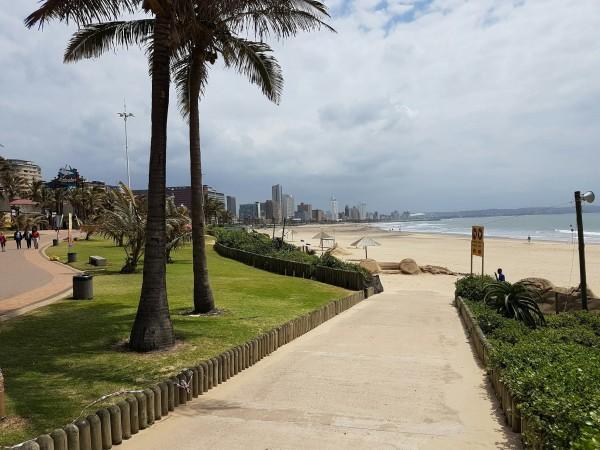
Overview of Durban
History & Cultural Influence
Established in 1824, Durban quickly grew from a small settlement to a bustling port city, playing a major role in South Africa’s colonial history. The influence of Zulu culture, Indian immigrants, and British colonization is evident in every corner of the city, making Durban a cultural melting pot like no other. The Zulu people, who have lived in the area for generations, have preserved their rich cultural history via song, dance, and art. Equally important is Durban’s Indian influence. In the late 19th century, Indian laborers were brought to work on the sugarcane plantations. Today, Durban boasts the largest Indian community in South Africa, which has significantly shaped its food, culture, and daily life.
Interaction with the Locals
Durban has a population of approximately 3.3 million, making it one of South Africa's major cities. Its population is a diverse blend of cultures, primarily consisting of Zulu, Indian, and European communities. This rich cultural mix is reflected in the city’s food, traditions, and daily life. Local citizens of Durban are known for their warmth and hospitality, making visitors feel welcome while offering a glimpse into the city's vibrant, multicultural identity.
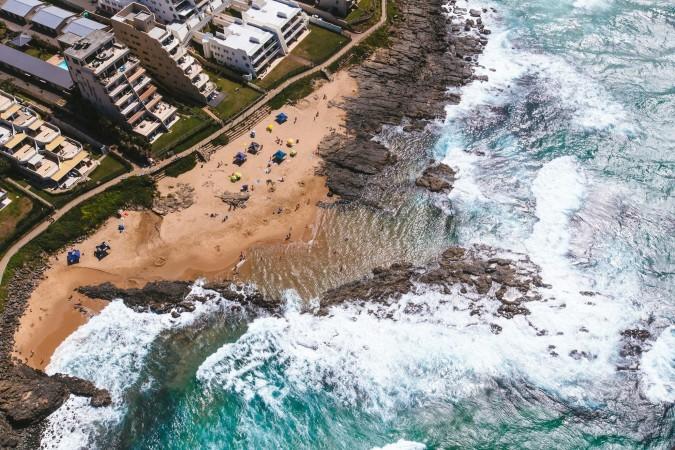
Durban's stunning coastline - © Jason Briscoe
Top Attractions in Durban
Durban’s top attractions offer a mix of outdoor adventure, family-friendly fun, and cultural experiences, ensuring that there’s always something to explore.
Moses Mabhida Stadium
A defining feature of Durban’s skyline, the Moses Mabhida Stadium is a must-see attraction for visitors. Beyond its architectural beauty, the stadium offers thrilling experiences such as the Big Rush Swing, the world’s largest rope swing. If you’re looking for a less heart-racing activity, take the SkyCar to the top for panoramic views of the city and coastline.
uShaka Marine World
One of the largest marine-themed parks in the world, uShaka Marine World is a hit for families and marine life enthusiasts. The park combines world-class aquariums, water slides, and live entertainment. It's a fun and educational way to spend the day, offering everything from shark diving to seal shows.
Golden Mile
For those who prefer relaxation, Durban’s Golden Mile is an iconic beachfront promenade lined with hotels, restaurants, and shops. Stretching for miles along the Indian Ocean, it’s the perfect place for a leisurely walk, a bike ride, or simply soaking up the sun. The beach is also great for surfing, with waves suitable for both beginners and pros.
Durban Botanical Gardens
Escape the hustle and bustle of the city at the Durban Botanical Gardens, the oldest surviving botanical garden in Africa. It’s a peaceful retreat where you can discover rare plant species, take a guided garden tour, or enjoy a picnic under the shade of centuries-old trees.
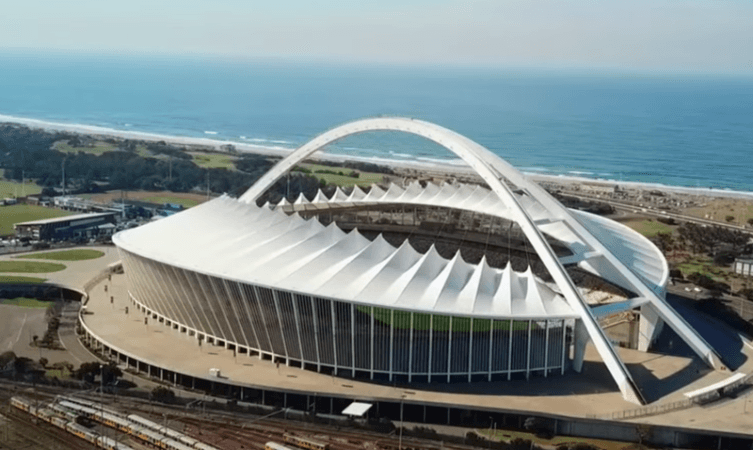
Moses Mabhida Stadium - © East Coast Radio
Must-Try Dishes in Durban
Durban’s culinary tradition is a rich tapestry of flavors, shaped by the city’s diverse cultural influences. From spicy curries to traditional Zulu fare, Durban offers a wide array of mouth-watering dishes that reflect its Indian, African, and colonial heritage.
- Bunny Chow: A true Durban icon, Bunny Chow is a must-try. This dish consists of a hollowed-out loaf of bread filled with curry, usually chicken, lamb, or vegetables. It's a substantial, tasty dinner that started in the Indian community and is now popular with everyone.
- Samoosas: Found at almost every street corner, samoosas are crispy pastry pockets stuffed with spiced fillings such as meat, potatoes, or lentils. These savory snacks are influenced by Durban’s Indian community and make for a perfect street food treat.
- Braai: A braai, or South African BBQ, is a cultural event in itself. Expect a variety of grilled meats such as boerewors (a type of sausage), steaks, and chicken, accompanied by traditional sides like chakalaka (spicy vegetable relish) and pap (maize porridge).
- Breyani: Breyani, also spelled biryani, is a fragrant Indian rice dish cooked with layers of spiced meat (usually chicken or lamb), lentils, and vegetables. Often garnished with fried onions, boiled eggs, and served with a side of sambals (fresh chutneys), Breyani is a comforting, aromatic dish perfect for lunch or dinner.
- Amadumbe: For a taste of traditional Zulu food, try amadumbe, a type of root vegetable similar to sweet potatoes. Often mashed with butter or honey, amadumbe can be served as a side dish or enjoyed on its own.
- Melktert: On the sweeter side, Melktert (milk tart) is a creamy, cinnamon-dusted dessert made with a milk-based custard filling in a pastry crust. This South African favorite is popular at family gatherings and known for its mild, soothing taste.
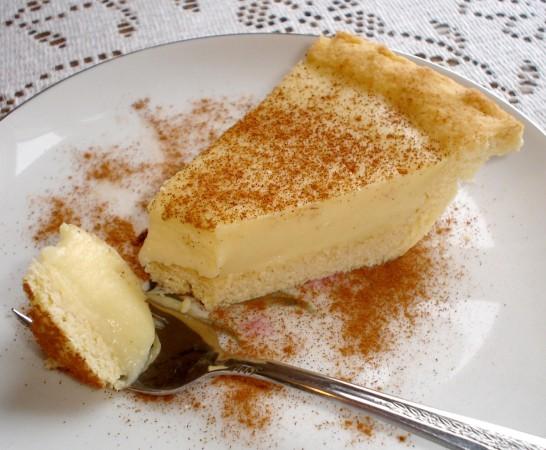
Melktert - © Food.com
Festivals & Local Celebrations
Diwali (Festival of Lights)
Durban’s celebration of Diwali, also known as the Festival of Lights, is one of the most vibrant in the world outside of India. This Hindu festival marks the triumph of light over darkness and good over evil. The city lights up with fireworks, traditional lamps, and colorful decorations. Local communities hold special prayers and feasts, and there are numerous cultural performances, including music and dance. The festival is a sensory delight, with streets filled with the aroma of Indian sweets and savory dishes, providing a rich cultural experience that highlights Durban’s significant Indian heritage.
Zulu Reed Dance (Umkhosi Womhlanga)
The Zulu Reed Dance, or Umkhosi Womhlanga, is an important annual cultural festival that takes place in the northern part of KwaZulu-Natal, not far from Durban. It is a significant rite of passage for young Zulu women, who present reeds to the Zulu King as a symbol of purity and unity. The festival is marked by traditional singing, dancing, and the wearing of colorful beadwork and traditional attire. It’s a powerful celebration of Zulu culture and heritage, offering visitors a chance to witness one of South Africa’s most vibrant and historic cultural ceremonies.
The Durban International Film Festival (DIFF)
The Durban International Film Festival is one of Africa's premier film festivals, featuring a broad selection of films from all around the world. The festival, which is held yearly, provides a venue for aspiring filmmakers and experienced artists to showcase their work. With screenings, workshops, and panel discussions, DIFF is not just a celebration of film but also a hub for cultural exchange and industry networking. Attendees can enjoy a wide range of films, from feature-length dramas to documentaries, and engage with filmmakers and industry professionals in an inspiring and dynamic setting.

Zulu Reed Dance (Umkhosi Womhlanga) - © South African Tourism
What to Do in Durban
- Surfing on the Golden Mile: Durban’s Golden Mile is a haven for surfers, known for its long, sandy beaches and consistent surf conditions. Surf schools along the promenade offer lessons and equipment rentals, making it easy for newcomers to hit the waves.
- Scuba Diving & Snorkeling: For underwater enthusiasts, Durban’s Aliwal Shoal is a top diving destination. The warm Indian Ocean waters ensure that scuba diving and snorkeling are enjoyable year-round, making Durban a prime location for aquatic adventures.
- Hiking in the Valley of 1000 Hills: Just outside Durban, the Valley of 1000 Hills offers breathtaking landscapes and outdoor activities. The valley is dotted with scenic hiking trails that range from easy walks to more challenging hikes, providing stunning views of rolling hills, lush greenery and local wildlife.
- Exploring Durban Botanic Gardens: The Durban Botanic Gardens is a serene escape in the heart of the city, featuring a diverse collection of plants, including indigenous species, exotic flowers, and a remarkable cycad collection.
- Relaxing at Durban’s Beaches: Enjoy sunbathing on the sandy shores, beach volleyball, or a leisurely swim in the warm Indian Ocean. The beachfront promenade is perfect for a scenic walk, bike ride, or simply enjoying the ocean views.
Shopping in Durban
- Victoria Street Market: For a taste of Durban’s multicultural vibe, head to the Victoria Street Market. This bustling marketplace is filled with stalls selling everything from Indian spices and street food to African crafts and Zulu beadwork. It’s the perfect spot to pick up unique souvenirs that capture the essence of Durban’s rich heritage.
- Gateway Theatre of Shopping: One of the largest malls in the Southern Hemisphere, the Gateway Theatre of Shopping offers a modern retail experience. Here, you’ll find international and local brands, dining options, and entertainment such as a cinema and indoor climbing wall.
- Local Craft Markets: Durban’s craft markets are a treasure trove of handmade goods, where you can find traditional Zulu beadwork, pottery, and other locally made art. These markets are an excellent opportunity to support local craftspeople while also bringing home a bit of South African culture.
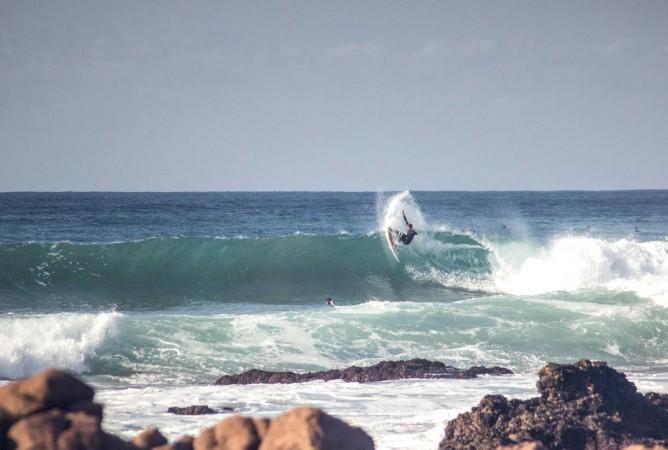
Surfing on the Golden Mile - © Ronald Langeveld
Weather in Durban: Best Time to Visit
Durban's subtropical climate makes it a year-round destination for tourists, with warm temperatures and ample sunshine throughout the year. The city enjoys a pleasant climate that significantly enhances the experience of its outdoor attractions and beach activities.
Spring in Durban
Spring ushers in warmer temperatures and increased humidity, with temperatures ranging from 15°C to 27°C (59°F to 81°F). The city begins to bloom with vivid flowers and foliage, while intermittent rains keep the landscape lush. It’s a great time to visit the Durban Botanic Gardens and enjoy the city’s outdoor spaces.
Summer in Durban
Durban’s summer season is hot and humid, with temperatures ranging from 21°C to 28°C (70°F to 82°F). This is the ideal time to enjoy the city's beaches and water activities. Summer also brings regular afternoon thunderstorms, which provide a welcome relief from the heat. Visitors should expect extreme humidity and sometimes heavy rain.
Autumn in Durban
Autumn in Durban is characterized by warm, dry weather with temperatures ranging from 16°C to 25°C (61°F to 77°F). This season is ideal for outdoor activities and exploring the city without the intensity of summer heat. Rainfall decreases, making it a great time for beach outings and sightseeing.
Winter in Durban
Winter in Durban is mild and dry, with temperatures ranging from 11°C to 23°C (52°F to 73°F). The weather is sunny and comfortable, making it perfect for beach visits and outdoor adventures. Winter is also the least humid season, making it an ideal time for travelers to visit the city's attractions.
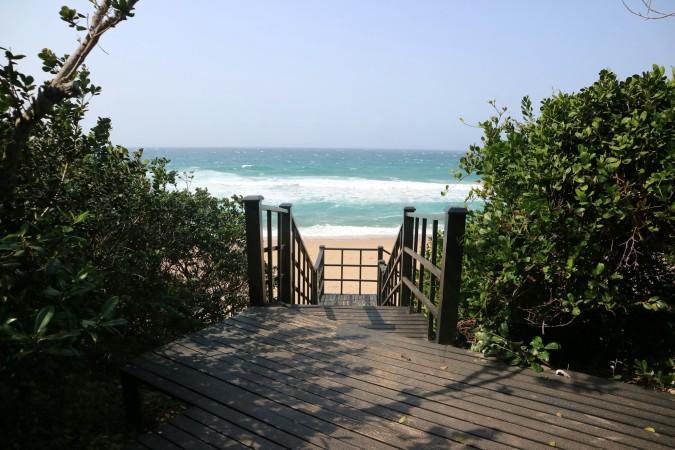
Any day is a good day to visit Durban's beach - © Angelo Moleele
Essential Travel Information
Getting Around Durban
- Public Transport: The city’s public transport system includes buses that cover key routes and neighborhoods. These buses are an affordable option for getting around but may not always be the most convenient choice for tourists unfamiliar with the routes.
- Minibus Taxis: Minibus taxis are a popular and cost-effective way to travel within Durban. While they provide an economical transportation option, they can be crowded and might not be ideal for visitors who are unfamiliar with the routes.
- Car Rentals: Renting a car is a convenient choice for tourists who prefer to explore Durban at their own pace. The city is well-connected with major roads and highways, making it easy to reach various attractions and nearby destinations.
- Ride-Sharing Services: Ride-sharing apps offer a reliable and flexible transportation option in Durban. These services provide a comfortable and safe way to get around the city, with the added convenience of booking and paying through your smartphone.
- Bicycles and Walking: Durban’s beachfront promenade is perfect for walking and cycling, allowing you to explore the coastline and enjoy scenic views at your own pace.
ATM & Banking Services
In Durban, accessing banking services is straightforward with numerous ATMs and banking facilities available throughout the city. ATMs are widely located at shopping centers, banks, and major tourist areas, providing convenient access to cash and accepting most international cards. For more comprehensive services such as currency exchange, money transfers, and account management, various banks with English-speaking staff are accessible across the city.
Where to Stay in Durban
- Luxury Hotels: For a high-end experience, Durban offers several luxury hotels that feature world-class amenities, stunning views, and exceptional service. These upscale establishments are perfect for those seeking a lavish stay with top-notch facilities.
- Boutique Hotels: If you prefer a more personalized touch, boutique hotels provide stylish and unique accommodations. These hotels often feature distinctive decor and a more intimate atmosphere, offering a memorable and individualized stay.
- Budget Lodgings: Budget travelers will find numerous affordable options in Durban, including guesthouses, hostels, and budget hotels. These accommodations offer comfort and value, making them suitable for travelers looking to economize without compromising on quality.
- Guesthouses: Durban’s guesthouses offer a cozy and welcoming environment. These establishments provide comfortable accommodations with a personal touch, often including breakfast and other home-like amenities.v
Articles for you

Explore Yala National Park - Sri Lanka Travel, Asia
Tucked away in Sri Lanka’s southeastern corner, Yala National Park is where wild nature meets deep tradition. Known worldwide for its leopard population, the park is also home to elephants, sloth bears, crocodiles, and hundreds of bird species. Beyond wildlife, Yala opens doors to a cultural landscape dotted with ancient temples, Buddhist ruins, and coastal villages. For travelers seeking more than just a safari, Yala offers a chance to explore eco-tourism, local communities, and sacred heritage sites.
Population: The Yala National Park area doesn’t have a human population.
Economy: The economy around Yala National Park thrives on a blend of eco-tourism, agriculture, and local services. Safari tours, eco-lodges, and cultural experiences drive steady income for nearby towns like Tissamaharama and Kataragama, supporting thousands of families.
Landmarks: Famous for Block I of Yala and wildlife encounters, including elephants, sloth bears, crocodiles, and exotic bird species.

Explore Galle - Sri Lanka Travel, Asia
Nestled on Sri Lanka’s southern coastline, Galle is a vibrant city where history meets the sea. Its cobbled streets, colonial architecture, and serene beaches make it a must-visit destination for travelers seeking a blend of culture, adventure, and relaxation. A UNESCO World Heritage site, Galle captivates visitors with its Dutch Fort, bustling markets, and friendly locals. Whether you’re exploring the ramparts at sunset or savoring fresh seafood by the shore, Galle promises an unforgettable journey into Sri Lanka’s heritage.
Population: Approximately 113,000 in 2023.
Economy: Galle’s economy thrives on tourism, trade, and fisheries. The city’s historic fort, colonial architecture, and coastal charm draw thousands of international visitors each year, making tourism its main economic driver. Fishing remains vital for local livelihoods, supplying fresh seafood across the region.
Landmarks: Famous for the Galle Fort, Dutch Reformed Church & Maritime Museum, and Unawatuna Beach.

Explore Bentota - Sri Lanka Travel, Asia
Nestled along Sri Lanka’s southwestern coast, Bentota is a tropical paradise that blends golden beaches, vibrant culture, and thrilling adventures. Famous for its calm waters, luxury resorts, and scenic river estuary, Bentota has become a top destination for travelers seeking both relaxation and authentic experiences. From serene beach walks at sunrise to adrenaline-pumping water sports, this coastal town offers a perfect balance of leisure and exploration. With its proximity to Colombo and Galle, Bentota is easy to reach, making it an ideal stop for both short escapes and extended holidays.
Population: Approximately 37,000 in 2023.
Economy: Bentota’s economy thrives mainly on tourism, which drives local businesses such as hotels, restaurants, and wellness retreats. The town also benefits from fishing, coconut cultivation, and handicrafts like wood carving and batik textiles. Many residents rely on the growing demand for water sports and Ayurvedic treatments, making tourism the backbone of both income and employment in the area.
Landmarks: Famous for Bentota Beach, Bentota River Safari, and Kande Vihara Temple.

Explore Mirissa - Sri Lanka Travel, Asia
Mirissa is a charming coastal town on Sri Lanka’s southern shoreline. Known for its golden beaches, turquoise waters, and vibrant marine life, it has become a must-visit stop for travelers exploring the island. Many come for whale watching, surfing, and sunset views at Coconut Tree Hill, but Mirissa offers much more than postcard beauty. The fishing boats you see anchored by the bay carry generations of stories. Local traditions, delicious cuisine, and a laid-back rhythm of life shape every visitor’s experience.
Population: Approximately 4,700 in 2023.
Economy: Mirissa’s economy is largely shaped by its coastal location. Fishing has long been the backbone of local livelihoods, with generations relying on the Indian Ocean for income. In recent decades, tourism has become the main driver of growth, thanks to whale watching, surfing, and beachside hospitality.
Landmarks: Famous for Mirissa Beach, Coconut Tree Hill, and Parrot Rock Bridge.

Explore Nuwara Eliya - Sri Lanka Travel, Asia
Tucked away in the Central Highlands of Sri Lanka, Nuwara Eliya is often called “Little England”. With its rolling tea plantations, cool misty mornings, and colonial charm, this mountain town feels like a step into another world. Travelers come here to breathe fresh air, walk through flower gardens, sip the finest Ceylon Tea, and enjoy a pace of life far from the island’s busy cities. Whether you’re drawn by scenic landscapes, heritage architecture, or the warmth of its people, Nuwara Eliya is a destination that blends nature, culture, and history in perfect harmony.
Population: Approximately 781,000 in 2023.
Economy: Nuwara Eliya’s economy thrives mainly on tea production, as it sits in the heart of Sri Lanka’s central highlands, famous worldwide for Ceylon Tea. The city also benefits from a growing tourism industry, attracting visitors with its colonial charm, cool climate, and scenic landscapes.
Landmarks: Famous for Gregory Lake, Hakgala Botanical Garden, and Victoria Park.

Explore Sukau - Malaysia Travel, Asia
Nestled on the banks of the Kinabatangan River in Sabah, Malaysian Borneo, Sukau is a destination where wildlife, culture, and conservation come together. Known as one of Asia’s top spots for river safaris and eco-tourism, this quiet village offers a front-row seat to encounters with Bornean orangutans, pygmy elephants, proboscis monkeys, and exotic birdlife.
Population: Approximately 1,400 in 2019.
Economy: Sukau’s economy is shaped by its riverine location and natural resources. Traditionally, the Orang Sungai community relied on fishing, small-scale farming, and forest gathering for their livelihood. Today, the village has shifted toward eco-tourism, with river cruises, jungle trekking, and homestays providing income.
Landmarks: Famous for the Kinabatangan River cruises, Gomantong Caves, and Ox-bow lakes and wetlands.
